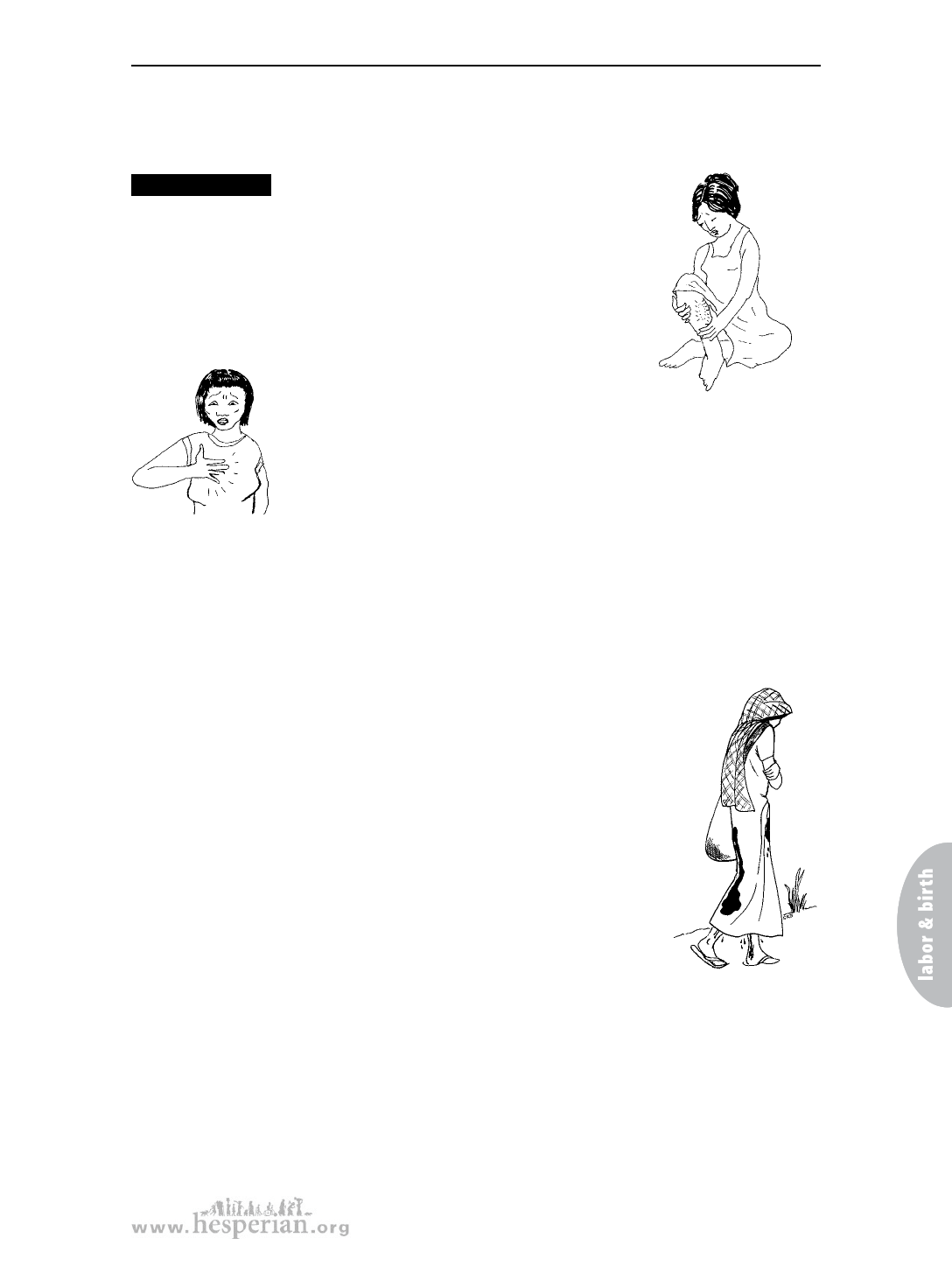
What to do for the mother
Watch for other warning signs
The mother’s legs are red, hard, painful, or swollen
Wa r nin g sig ns Very rarely, after a birth, a woman’s blood
can form a clot in her leg. Signs of a clot are:
• swelling or heat in one leg or foot.
• pain in one leg when it is squeezed or during walking.
• a painful red area on one leg.
• a hard lump in the leg.
A clot can move to a
woman’s lung and make
breathing impossible.
A blood clot is very dangerous.
If the clot breaks free and moves through
her blood, it can cause problems in other parts of her
body. For example, the clot can go into her lung and
make it impossible for her to breathe.
If a woman has a sign of a blood clot, go to a medical
center immediately. On the way, have the woman lie
down with her legs above her hips and try to stay still. Put
warm cloths on the swollen area, but do not rub or
massage it. Give aspirin for pain.
Leaking urine or stool
When urine or stool leaks freely from a woman, she may have a
hole in the skin inside her vagina, called a fistula. This hole is
caused during labor by the baby’s head pressing hard on the skin
between the bladder and the vagina, or sometimes the skin
between the rectum and the vagina. The pressure of the head is
so great that the skin dies and a hole opens up between 3 and 12
days after the birth.
Fistulas can usually be treated. A small fistula may heal on its
own: the woman should drink a lot of fluids and take sitz baths
(see page 326). If she is catheterized for 3 weeks, urine will be
kept out of the fistula long enough for it to heal.
A serious fistula needs to be repaired. There are hospitals that
can do this surgery — usually about 3 months after the birth.
Help the woman get to a medical center for help.
Fistula causes
leaking urine.
Fistulas can be prevented
A fistula happens when a woman is in labor for a long time. When a woman has
been in labor for many hours, do not keep waiting. Get medical help. To learn more
about preventing fistulas, see page 22.
273
A Book for Midwives (2010)